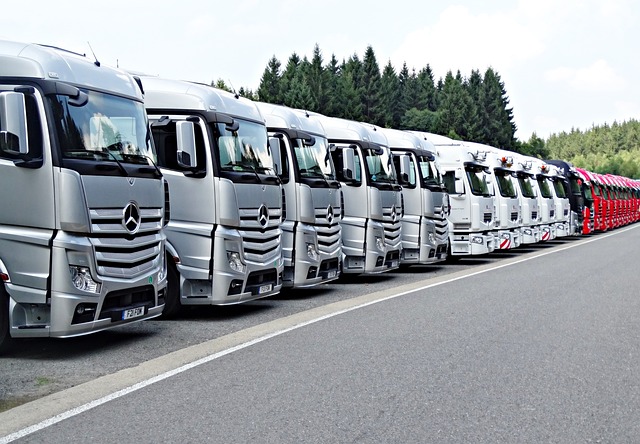Looking to register your car in California? This comprehensive guide breaks down the process step-by-step, from understanding essential requirements to completing the registration online or in person. Learn about crucial documents needed, including a valid VIN verifier, to ensure a smooth experience. We’ll walk you through verifying your Vehicle Identification Number (VIN), paying fees, and receiving your custom California license plate.
- Understand Requirements for Car Registration in California
- Gather Necessary Documents for Car Registration
- Verify Vehicle Identification Number (VIN) with Official Tools
- Complete Online or In-Person Registration Process
- Pay Registration Fees and Receive Your Plate
Understand Requirements for Car Registration in California

Before you start the registration process in California, it’s crucial to understand what’s required. In California, all vehicles must pass a vehicle identification number (VIN) inspection to ensure they meet safety and emissions standards. This inspection verifies that your car’s VIN is accurate and checks for any outstanding issues that might prevent registration. The state also requires proof of insurance and completion of a title transfer if you’re the new owner.
A mobile VIN verification or inspection can be particularly helpful in this process, as it allows you to complete these steps conveniently. With a simple online or phone-based service, you can have your vehicle’s VIN checked against databases to ensure its authenticity and compliance, streamlining the registration process significantly. Remember, accurate documentation and meeting all legal requirements are essential for a smooth car registration experience in California.
Gather Necessary Documents for Car Registration

Before you begin the car registration process in California, it’s crucial to gather all the essential documents. One critical step is to obtain a Vehicle Identification Number (VIN) verifier. This can be done through a mobile VIN verification service or by conducting a traditional VIN inspection at a designated location. The VIN is a unique code that identifies your vehicle and is typically located on the vehicle’s certificate of origin or on the dashboard near the driver’s seat.
Having accurate and up-to-date information ensures a seamless registration process. Along with the VIN, you’ll need to provide proof of ownership, such as a purchase agreement or title, a valid driver’s license, and current auto insurance papers. Additionally, ensure that your vehicle meets all safety and emission standards set by California to avoid any delays in the registration procedure.
Verify Vehicle Identification Number (VIN) with Official Tools

Before diving into the registration process, it’s crucial to ensure your vehicle’s authenticity by verifying its Vehicle Identification Number (VIN). This unique 17-character code is a key component in identifying your car and ensuring it meets safety standards. Utilize official tools designed for this purpose, such as those offered by the California Department of Motor Vehicles (DMV) or trusted third-party VIN verifiers. These tools can cross-reference the provided VIN with state records to confirm its validity and history.
One convenient method is through a mobile vin verification service, allowing you to quickly check your vehicle’s details from the comfort of your home. Alternatively, consider using a mobile vin inspection app that provides real-time data on your car’s status, including any potential issues or recalls. This step ensures that you’re starting the registration process with accurate and reliable information, streamlining the entire experience.
Complete Online or In-Person Registration Process

You have two options for registering your car in California: online or in-person. Both methods require gathering essential documents and information, including your Vehicle Identification Number (VIN), which acts as a unique fingerprint for your vehicle. Start by obtaining a clear, legible VIN from your vehicle’s registration or the title document if you’re transferring ownership. A vin verifier tool can help ensure accuracy during this process.
For online registration, visit the California Department of Motor Vehicles (DMV) website and follow their step-by-step guide. You’ll need to input your VIN during the application process, which helps verify vehicle details. Alternatively, you can visit a local DMV office for an in-person registration, where staff will assist you and cross-reference your VIN information manually. Consider using a mobile vin verifier app for convenience if you opt for an in-person visit, as it can streamline the verification process.
Pay Registration Fees and Receive Your Plate

After ensuring your vehicle meets all the necessary requirements, it’s time to pay the registration fees. These fees vary based on factors like the type of vehicle and its age. You can typically pay online or at a California Department of Motor Vehicles (DMV) office. Once your payment is processed, you’ll receive your unique vehicle identification number (VIN) verifier, which plays a crucial role in the registration process.
The VIN verifier is a critical component that links your vehicle to its history and ensures it complies with safety standards. You can opt for a mobile vin inspection or visit a DMV office to obtain this verifier. With this document in hand, you’re one step closer to officially registering your car.
Registering a car in California is a straightforward process that requires understanding key steps, gathering essential documents, and verifying critical information like the Vehicle Identification Number (VIN) using reliable tools. By completing the online or in-person registration process, paying relevant fees, and receiving your custom plate, you’ll be officially registered and ready to hit the road. Remember to always use a trusted VIN verifier to ensure accuracy throughout the car registration process in California.



